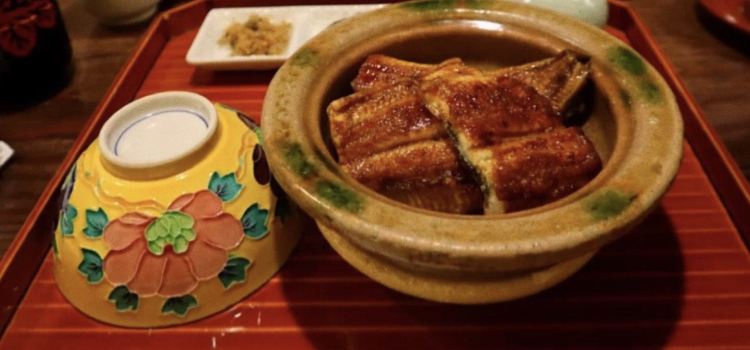Chinese Restauranttaikokuya
5/51 Reviews

+81 44-411-6806
What travelers say:

A family-style restaurant, an old wooden house, and a small courtyard. The grandfather with white pigtails and yellow plastic round-frame glasses grills eels, and the grandmother, who bends over and smiles gently, is responsible for serving the food.
There is only one option on the menu, the clay pot eel rice set.
Unlike ordinary eel rice, the biggest feature of his restaurant is the small clay pot specially customized by pottery artist Nakagawa Ichiro. After the guests are seated, the rice is cooked on the fire.
The eels used are from Mikawa Isshiki (the origin will be adjusted according to the quality and season of the eels), and the Kansai method is to cut the belly and put the head on the skewer and grill it directly over high heat.
But it is not all, because the last step is to cut the eels into pieces immediately when they are about to be baked and put them into the interlayer on the rice in the small clay pot and cover them with a lid. The heat from the rice is used to steam them slightly, which makes the meat softer than the traditional Kansai style, but still retains the charred and oily feeling of the Kansai style grilled fish. It is the little ingenuity that the grandfather is most proud of.
Scoop up a small bowl of rice, take a bite, then put a large piece of steaming eel on it and pour the secret sauce on it.
The ultimate combination of fat and carbon water, how can it not be fragrant?
The eel skin is very burnt, the fish meat is thick and chewy, and the fish skin is oily and elastic, and chopsticks can't cut it. Compared with the soft and glutinous Kanto style, I prefer this burnt, chewy and oily Kansai style.
The sauce itself is not salty or sweet, and the seasoning is very "Kyoto". It doesn't have a strong presence when poured on the fish and rice, but it makes you know that it is indispensable.
The rice of Shiga New Rice is slightly soft without losing its graininess. Many people sigh that his rice is really great. To be honest, I prefer the rice with full grains and hard body, and I don't really taste the beauty of this small earthen pot stewed rice.
More
Reviews of Chinese Restauranttaikokuya
Some reviews may have been translated by Google Translate
5/5Outstanding
All (1)
Latest
Photo reviews (1)
Positive reviews (1)
A family-style restaurant, an old wooden house, and a small courtyard. The grandfather with white pigtails and yellow plastic round-frame glasses grills eels, and the grandmother, who bends over and smiles gently, is responsible for serving the food. There is only one option on the menu, the clay pot eel rice set. Unlike ordinary eel rice, the biggest feature of his restaurant is the small clay pot specially customized by pottery artist Nakagawa Ichiro. After the guests are seated, the rice is cooked on the fire. The eels used are from Mikawa Isshiki (the origin will be adjusted according to the quality and season of the eels), and the Kansai method is to cut the belly and put the head on the skewer and grill it directly over high heat. But it is not all, because the last step is to cut the eels into pieces immediately when they are about to be baked and put them into the interlayer on the rice in the small clay pot and cover them with a lid. The heat from the rice is used to steam them slightly, which makes the meat softer than the traditional Kansai style, but still retains the charred and oily feeling of the Kansai style grilled fish. It is the little ingenuity that the grandfather is most proud of. Scoop up a small bowl of rice, take a bite, then put a large piece of steaming eel on it and pour the secret sauce on it. The ultimate combination of fat and carbon water, how can it not be fragrant? The eel skin is very burnt, the fish meat is thick and chewy, and the fish skin is oily and elastic, and chopsticks can't cut it. Compared with the soft and glutinous Kanto style, I prefer this burnt, chewy and oily Kansai style. The sauce itself is not salty or sweet, and the seasoning is very "Kyoto". It doesn't have a strong presence when poured on the fish and rice, but it makes you know that it is indispensable. The rice of Shiga New Rice is slightly soft without losing its graininess. Many people sigh that his rice is really great. To be honest, I prefer the rice with full grains and hard body, and I don't really taste the beauty of this small earthen pot stewed rice.